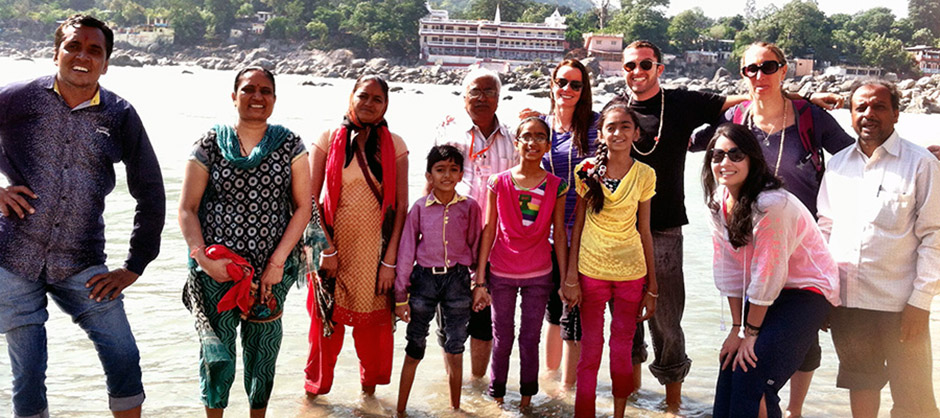I’ve carried many stories back with me from my recent travels to India.
Stories, of course, come back with you from every journey.
A story is an interpretation of facts and details that we (willfully or subconsciously) place into context. The story can be replayed and rethought a thousand times over in our mind’s eye until something resembling a single narrative becomes “the” story.
Think back to a heartbreak, a struggle, or a brilliant moment of triumph. You could probably recite the tale with the dramatic flare of a court jester before an entire audience. Under a spotlight. With a fog machine. And maybe pyrotechnics…
I say this to say that stories don’t happen to us–stories are how we tell what’s happened.
Who’s to say that a story of heartbreak or struggle couldn’t, itself, actually be your story of brilliant triumph? Stories are how we choose to interpret the events and happenings of our lives. How we choose to make sense of what’s happened is what the story becomes.
Of course, in the world we live in today, everything demands immediacy.
(I know you know where this is going, so I won’t spend too much time on my soap-box).
Our world is an immediate world, and things like social media reward immediacy. Snap reactions, quick judgments, having any opinion on something is implicitly valued. We’re “rewarded” with things like follower counts, blog readers, new subscribers, Retweets, Likes, Pins, +1’s, Shares, Thumbs Ups, e-FistBumps, Digi-Kudos and iHighFives. (Okay, I made those last few up).
Point is, all of our digital toys and tech tools have these psychological devices built into them that hollowly “reward” us for being immediate with our thoughts, snap with our emotions and unconscious with our habits.
It’s enough to drive someone a bit neurotic who’s got a touch of artful patience in their veins.
We swim in circles that say, “Be ruthlessly obsessive, and you shall have your reward.”
But guts like ours say, “Be tempered and surefooted, and you will be on your way.”
As we see time and time again, the instant-world can, when we’re not careful, put on display the lower levels of our emotional reaction (and overreaction). Look to how many athletes, celebs and even big brands flub their public relations by getting carried away on Twitter, sharing hollow, silly, offensive, bizarre or half-thought thoughts. We see in these cases how the immediacy of social media isn’t necessarily a great thing, let alone something that always promises a reward.
(Steps off soap-box.)
As a writer, author and storyteller, and as someone in the business of helping people, this philosophy is a recurring theme that I teach–and that I have to live, myself.
Two weeks ago I shared such a story.
The first story about my recent travels in India was about my first six hours in the country, when language barriers and sheer exhaustion led me to stew in the front seat of a cab at 4:30 AM as our driver kept falling asleep at the wheel.
It was not a lot of fun to be living that story.
Until I remembered that it was a story.
Right there in my seat, I started jotting notes and descriptive details into my phone to remember for later. When I remembered that I was living an interpretation of what was happening to me–defying death on an Indian highway in the dead of night after 30 straight hours of travel–I found myself able to let go of my frustration and ride out the rest of our cab ride a bit more pleasantly–and with a few delicious, sweetened masala chai teas in my belly. Win.
I say all this to say that sometimes, good stories take time to marinate.
A few sprinkles of time, patience and reflection can help us, as the storytellers of our lives, properly place details, facts and happenings into their proper context.
What we’re left with is a story made like a meal, with greater care and more love.
So remember, my friend:
Immediate can be overrated.
Especially if the course of our lives mimics the very stories that we tell.
Here are 18 mini-stories, told in photos and thoughts, that I took home with me from India well over a month ago.
1. Wherever there is beauty in commotion, colorful streets, new faces, and stories intersecting is a temple.
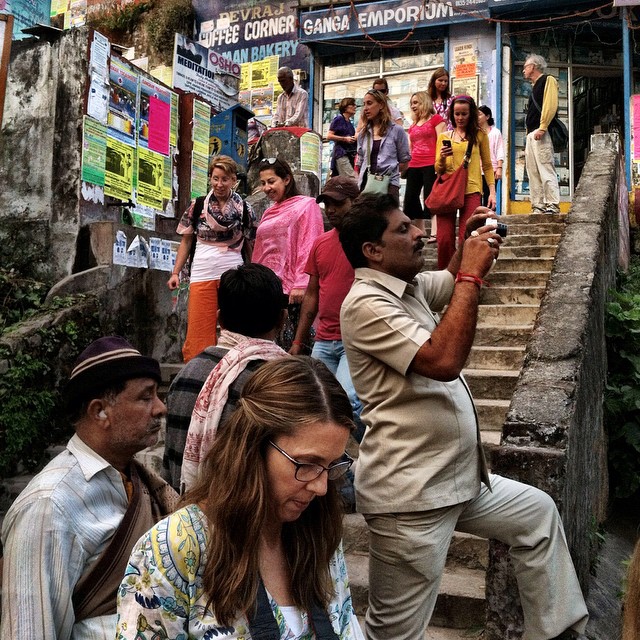
On our first day in Rishikesh, we went on a walking tour of town. The mix and mingle of colors, faces and stories reminded me of my time in New York City, only more intense and certainly foreign. The streets of India helped me see that for me, a temple is anywhere that these forces meet.
2. Spirituality makes the mystery beautiful.

The Trayambakeshwar Temple is a well-known site in Rishikesh, just over the Laxman Jhula bridge. Life is itself one great mystery, and that mystery can be very overwhelming at times. But the spiritual brings a sense of surrender, reverence and beauty to the mystery.
3. When noise gives way to silence, you hear peace.

Sunset looking south while crossing the Ram Jhula bridge in Rishikesh. You can forget the sound of peace, even if you’re surrounded by quiet. After spending days engulfed in the utter noise of the streets of India by day, the peace of quiet by nightfall was truly a sound to be heard.
4. Make art everywhere.
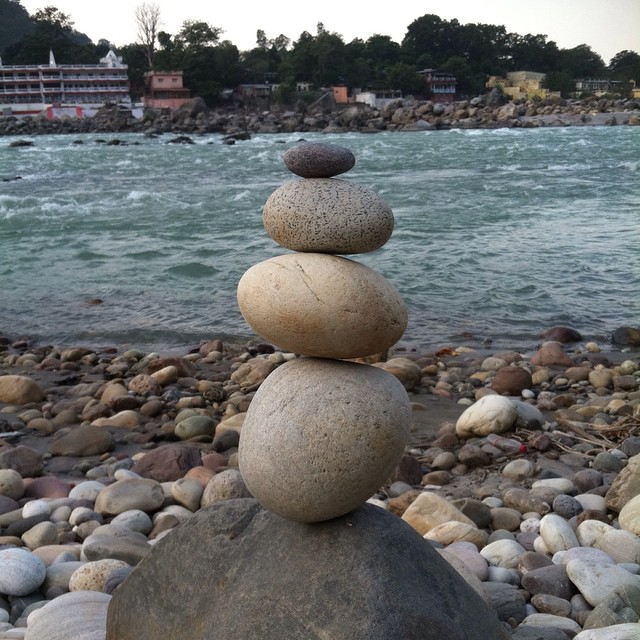
The zen practice of stacking rocks that are destined to fall and crumble, here, on the edge of the holy Ganga river. The only sound is the rushing of water.
5. Every face is a mirror.
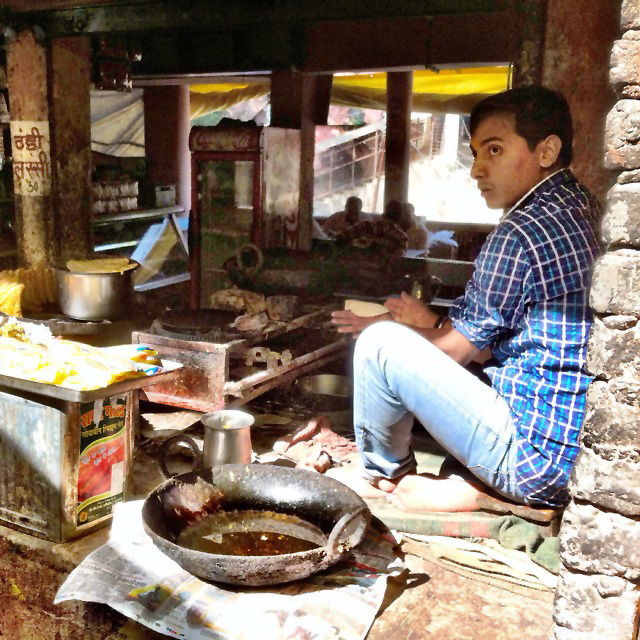
A boy cooks for guests and tourists at the Neelkanth Temple, dedicated to Lord Shiva, isolated in the mountains of Uttarakhand.
6. Brotherhood. Sisterhood. Family. For any reason.

Posing with some brothers after our Himalayan foothills waterfall hike. It was a novelty for local Indians to see foreigners like us–many would stand nearby to take our picture. Instead, we offered to pose and act like we were famous or something. (By “we,” I really mean “me”).
7. What was this cow thinking? I’ll never know.
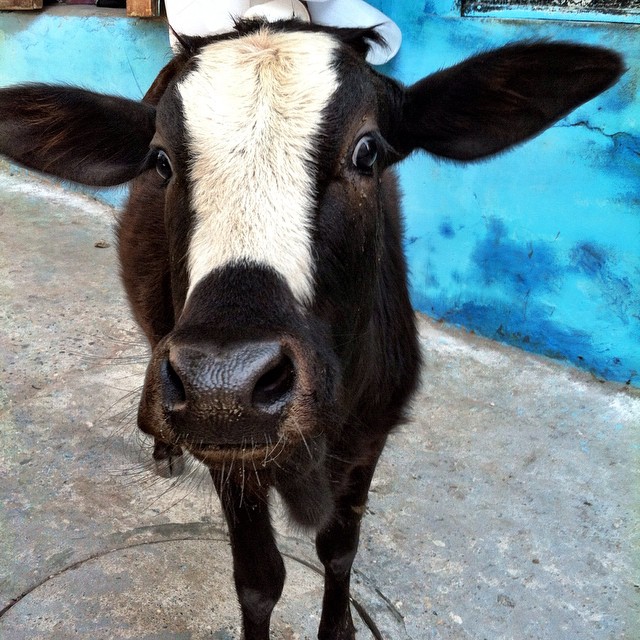
Yup, cows are everywhere, just as you heard about India. Here at Devprayag, where two rivers meet to form the Ganga, I got up close and personal with one cow. I would pay a lot of money to know what he was thinking at this moment. I’ll never know.
8. If you ever wonder, “What for?” Because little humans deserve our everything.
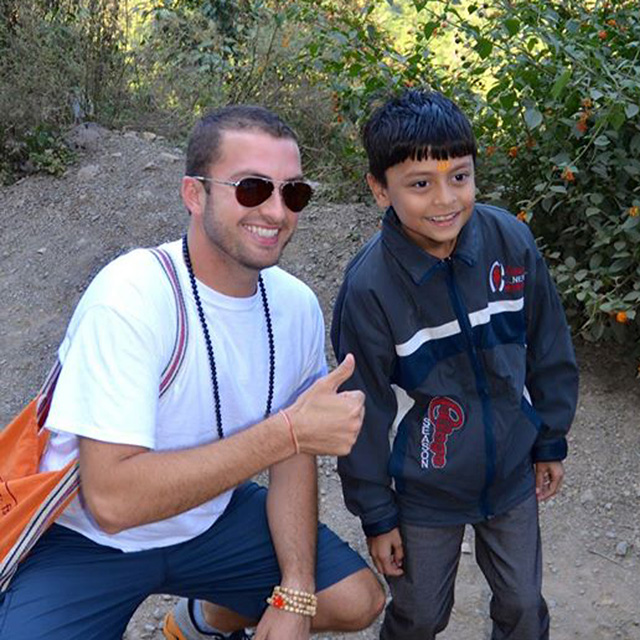
Remember how I said I posed with everyone in India? I really did. The innocent joy of this cute kid reminded me that, in spite of the challenges like poverty and illness throughout a developing nation (and, of course, in our world at large), that little humans deserve our every effort to make this world a better place. The young will forever inherit the earth we leave them.
9. An essay is like daylight; steady and long. A poem is a sunset; it can say more with less.

Poem writing came back to me in India–it seemed a more fitting way to capture the feel and experience than any essay. Here, the sunset from our hotel balcony in Rishikesh reminded me that some short, beautiful light can say a lot more than a long, steady show of it.
10. Damn the rules.

I believe in respecting traditions and rules just on principle. But it’s fun to break them, just because.
11. To bring more magic into your life, watch more sunrises.

A sunrise over the mountains from Kunjapuri temple in Uttrakahand. Off to the left, you could see the snowy mountaintops of the Himalayas. For more magic in your life, I say watch more sunrises.
12. Climb higher.
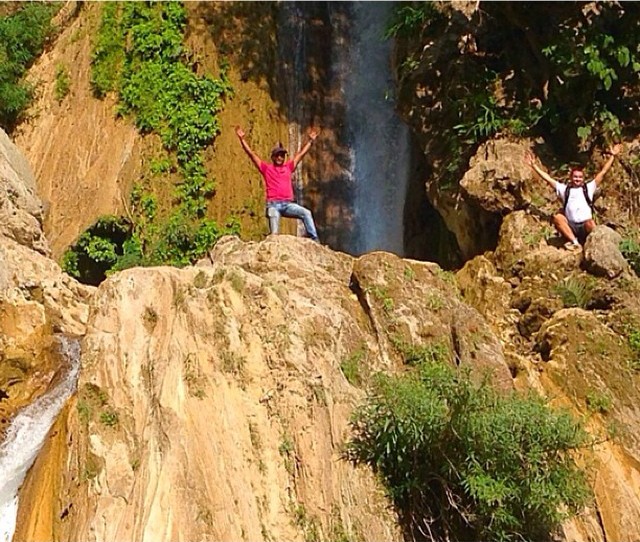
Our guide Sahdev, who made an appearance in my first story on India, became a good friend on our trip. On our hike to the top of this Himalayan foothills waterfall, Sahdev encouraged me to climb an extra 40 feet with him–where we saw a poisonous snake, I mildly freaked out, and somehow survived the climb back down.
13. Pull your heart open.
I came to embrace the Hindu deity Hanuman, the monkey-man with super powers and who is revered in modern India as a devotional warrior, while on our trip. Anyone who’s read my latest book knows my beliefs on living “heart open.” As you can see, so does Hanuman (and quite graphically, at that).
14. Playful is a serious priority.
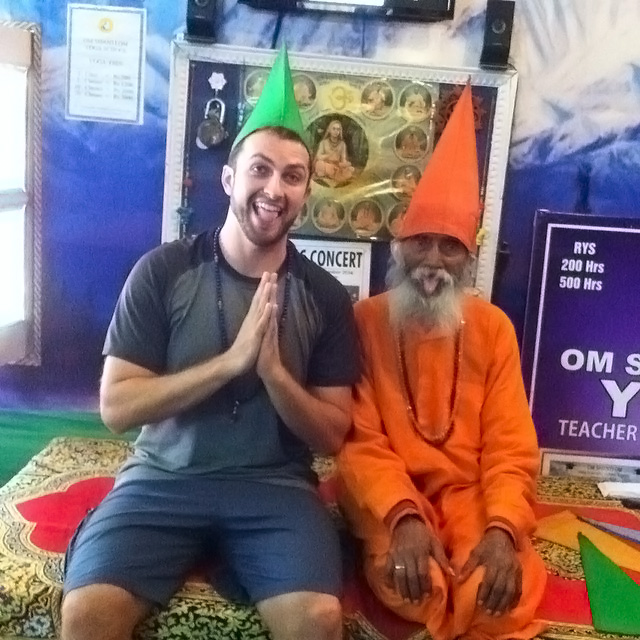
After attending a yoga class with a 106-year-old yogi who made sure to stick out his tongue for our photo together, I decided once and for all, playful is a serious priority for me. I think that embodying playfulness, even in serious work and in service, lightens how heavy the burden of responsibility can be that we place solely on our own shoulders.
15. Forget that anyone is watching.

On our last night in India, we were encouraged to wear the most colorful attire we could. On the walk from our hotel to dinner, I assembled this spectacular ensemble for $11 USD. Forget that anyone is watching. It is truly liberating.
16. Pray more. In any form. On flowers, in journals, in thoughts.
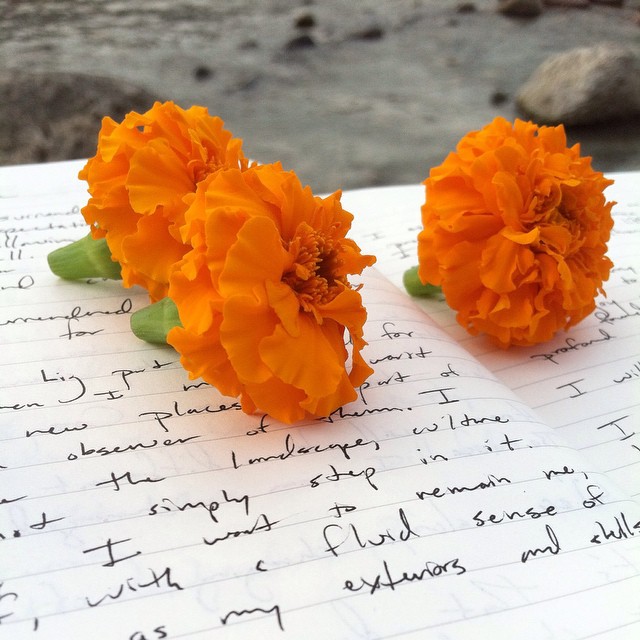
20th century India mystic Yogananda, who spent decades speaking to audiences in America about yoga, spirituality and the God in each of us, said that Indians were a people who “… didn’t need convincing to be spiritual.” Most Westerners seem to. We have personal hangups about religiosity and plenty of healthy skepticism of institutions that have peddled hypocrisy and oppression for centuries. Fine. So let’s reclaim spiritual as a human religion beyond institution. Let’s pray more on the heads of marigold flowers and in our personal journals. Let’s pray in our thoughts, offerings and intentions–with our bodies in movement and in our smiles on the street.
17. Seek sacred in simple moments.
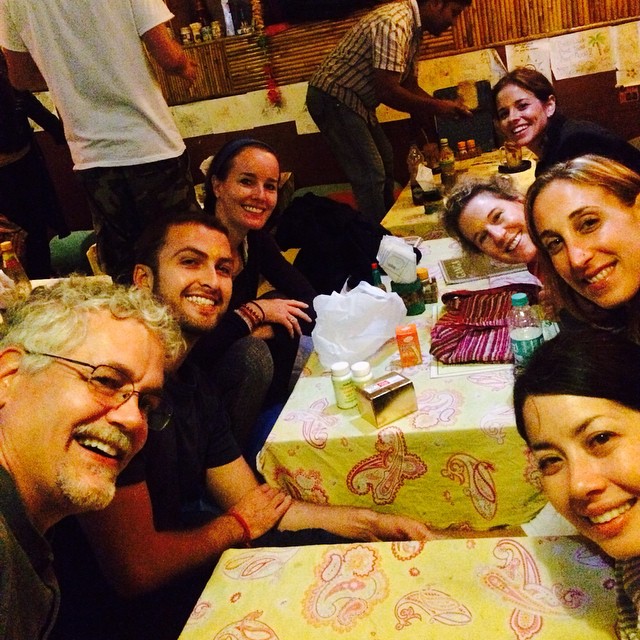
Reclaiming spiritual in the everyday? Seeking sacred in ordinary moments? Let’s call a joyful meal with friends, “communion.”
18. Take it home with you.
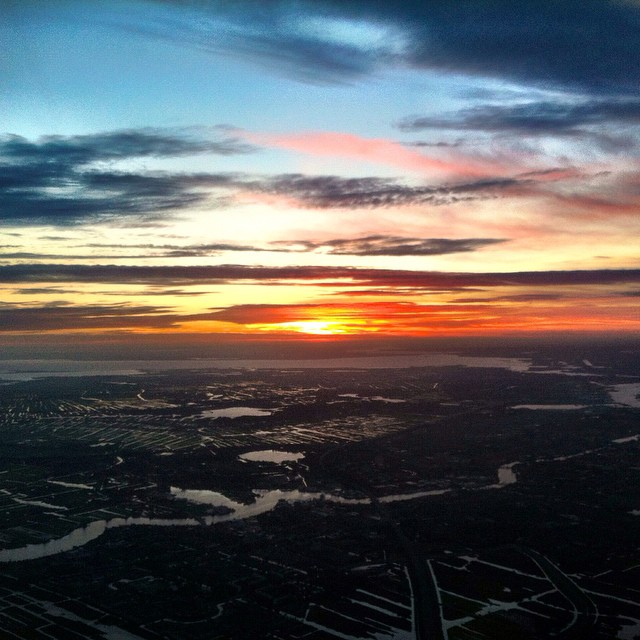
The sun rises over Amsterdam, the Netherlands, on our return journey home from India.
It’s been more than a month since I’ve gotten home from India.
The stories have had time to marinate. The experiences have been experienced.
What I know is that these stories of India are parts of a story that I want to keep living.
I want to take these pieces home with me. I want to keep living them.
Some are already living on in the yoga that I’m teaching every week–others will find life in new projects debuting in the New Year.
The stories we tell aren’t just how we reflect on what we’ve experienced in the past.
Our stories are how we choose to live, moving forward.
What stories are you carrying with you?

